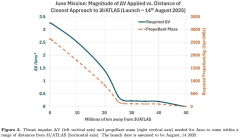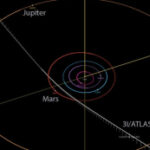We do not know what lies in interstellar space. There are an expected to be 300,000 larger than Death Star sized objects beyond Neptune. There are some expected moon and planet sized objects around the edge of our solar system and we cannot see them. We must search through new data from the NSF-DOE Rubin Observatory for any anomalous interstellar objects. We need even better telescopes as we are quite blind.
NASA can move the Juno probe around Jupiter to make a closer observation of the 3I/Atlas object which is likely the largest interstellar object to reach the inner solar system for 10,000 years.
Avi Loeb is looking for evidence of objects of interstellar origin that wash up on our shores. This is like looking for signs of the United States on an island by looking for washed up coca cola bottles.
There is another interstellar object in our solar system. It is 3I/ATLAS and we can see if behaves in the coming months like the previous interstellar comet 2I/Borisov did as it approached the Sun, then we will know that 3I/ATLAS is natural in origin.
Avi wrote a paper with Adam Hibberd and Adam Crowl. They proposed using the Juno spacecraft, currently in orbit around Jupiter, to probe 3I/ATLAS, when it passes on March 16, 2026 within a distance of 53.6 million kilometers from Jupiter. Congresswoman Anna Paulina Luna, supported this proposal by sending a letter to NASA’s leadership encouraging the use of Juno as a probe of 3I/ATLAS.
The interstellar object 3I/ATLAS is expected to arrive at a distance of 53.56(±0.45) million km (0.358 ± 0.003 au) from Jupiter on March 16, 2026. We show that applying a total thrust ∆V of 2.6755 km per second to lower perijove on September 9, 2025 and then execute a Jupiter Oberth Maneuver, can bring the Juno spacecraft from its orbit around Jupiter to intercept the path of 3I/ATLAS on March 14, 2026. They further show that it is possible for Juno to come much closer to 3I/ATLAS (∼ 27 million km) with 110 kg of remaining propellant, merely 5.4% of the initial fuel reservoir. They find that for low available ∆V there is no particular benefit in application of a double impulse (for example to reach ∼ 27 million km from 3I/ATLAS), however if Juno has a higher ∆V capability there is significant advantage to a second impulse with typically a saving of propellant by a factor of a half. A close fly-by
might be able to probe the nature of 3I/ATLAS far better than telescopes on Earth.
In a worst case science assessment, we will get an opportunistic close flyby of a confirmed interstellar object. The speed indicates it had to





